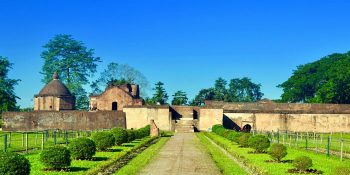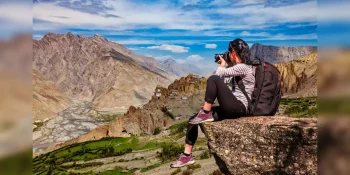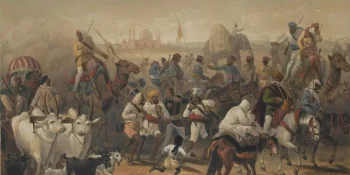Delhi, the capital city of India, is steeped in history, with a rich tapestry of ancient monuments and historical sites that bear witness to its illustrious past. From the grandeur of Mughal architecture to the remnants of ancient dynasties, Delhi’s historical sites offer a glimpse into the city’s cultural heritage and architectural prowess.
One of the most iconic landmarks of Delhi is the Red Fort, a UNESCO World Heritage Site that served as the main residence of the Mughal emperors for nearly 200 years. Built by Emperor Shah Jahan in the 17th century, the Red Fort is a masterpiece of Mughal architecture, with its imposing red sandstone walls, intricate marble carvings, and sprawling gardens. The fort complex houses several notable structures, including the Diwan-i-Aam (Hall of Public Audience) and the Diwan-i-Khas (Hall of Private Audience), where the emperor held court and conducted state affairs.
Nearby lies another architectural marvel, the Jama Masjid, one of the largest mosques in India. Commissioned by Shah Jahan and completed in 1656, this grand mosque is constructed of red sandstone and white marble and can accommodate over 25,000 worshippers. Its towering minarets, marble domes, and intricate calligraphy make it a breathtaking sight to behold.
Moving further back in time, the Qutub Minar stands as a testament to the glory of the Delhi Sultanate. Built in the 12th century by Qutb-ud-din Aibak, the first ruler of the Delhi Sultanate, this towering minaret is the tallest brick minaret in the world, soaring to a height of 73 meters. Surrounded by ancient ruins and ornately carved pillars, the Qutub Minar complex is a UNESCO World Heritage Site and a remarkable example of Indo-Islamic architecture.
Delhi’s historical sites also include remnants of earlier civilizations, such as the impressive ruins of the Tughlaqabad Fort. Built in the 14th century by Sultan Ghiyas-ud-din Tughlaq, this fortress once served as the capital of the Tughlaq dynasty. Today, the crumbling walls and imposing bastions of the fort offer a glimpse into Delhi’s medieval past.
For those interested in exploring Delhi’s colonial history, the imposing India Gate is a must-visit landmark. Built in the early 20th century as a memorial to Indian soldiers who died in World War I, this iconic arch stands as a symbol of India’s struggle for independence. Surrounded by lush lawns and flanked by the Rashtrapati Bhavan (Presidential Palace) and the Parliament House, India Gate is a popular spot for locals and tourists alike.
Delhi’s historical sites are not limited to grand monuments and forts; the city also boasts several beautifully preserved tombs and gardens. The Humayun’s Tomb, built in the 16th century, is a stunning example of Mughal architecture and served as a precursor to the Taj Mahal. Surrounded by lush gardens and reflecting pools, this mausoleum is the final resting place of Emperor Humayun and is considered a masterpiece of symmetry and design.
In addition to these iconic landmarks, Delhi is dotted with countless other historical sites, each with its own story to tell. From the ancient ruins of the Mehrauli Archaeological Park to the serene beauty of the Lodhi Gardens, the city’s historical treasures offer a fascinating glimpse into India’s rich and diverse cultural heritage.
In conclusion, Delhi’s historical sites are a testament to the city’s vibrant past and serve as a reminder of its enduring legacy. Whether exploring the grandeur of Mughal architecture or tracing the footsteps of ancient dynasties, visitors to Delhi are sure to be captivated by the richness and diversity of its historical heritage.









